It’s no secret that Artificial Intelligence (AI), and in particular, the current king of language processing tools ChatGPT, has been a game changer for the way in which we do business.
As a marketer, I’m now leveraging AI-powered tools and platforms to create more engaging content, analyse customer behaviour, optimise campaigns, and personalise messaging at scale.
As a software developer, my husband has seen (and used) AI to create vast amounts of code, at speed, and at length.
Godfather of Marketing, Seth Godin, asked ChatGPT about the intersection of marketing and AI and received this response:
“While AI driven language models are growing in leaps and bounds. They are not perfect. It’s essential to remember that human input, empathy & intuition cannot be replicated entirely. Emphasising the human element will help us harness the best of both worlds. Combining the efficiency of AI with the warmth and nuance of human interaction.”
To say that this is my jam, is a bit of an understatement. I mean, my business name is “The Human Element”. I’m all about injecting humanness into your brand and your marketing. And I’m a firm believer that while AI is absolutely assisting in the speed in which we deliver our work, it’s not the silver bullet that’s going to solve “all of the things”.
So before you let go of your copywriter and promote ChatGPT to your CMO, consider these four key elements, and how they might play out in your business.
1: Humans are best at understanding your audience segmentation and targeting
Sure, AI can analyse vast amounts of data to identify customer segments and their preferences. And sure, we can use this information to personalise messaging and create more effective campaigns. AI can also help identify lookalike audiences, which can expand your potential customer base.
However, the human element comes into play when considering factors that AI may not be able to identify, such as cultural nuances, subcultures, and social norms.
For example, say you want to launch a course in Japan. You use AI to research the region and draft you some scripts for video content. You record the videos with what you believe to be a big, warm, welcoming smile. You do a webinar to promote the course, but have technical difficulties and are five minutes late. Already you’ve offended your target audience twice, by not understanding subtle cultural nuances that are beyond any AI understanding.
2: AI can only predict to a point, humans need to fill the gaps
AI can help marketers forecast future trends and identify patterns that could affect sales. For instance, AI could monitor social media platforms, online forums, and customer reviews to gauge public sentiment leading into the COVID pandemic, and predict the need for more mental health service. This information can be valuable for planning marketing campaigns and allocating resources. However, it’s important to remember that AI can only work with the data it has access to. Specifically, ChatGPT was trained on big data that was collected up until 2021, so its knowledge is limited beyond then. It doesn’t even know what a post-pandemic world looks like.
Human insights and experience can help identify potential threats and opportunities that may not be immediately apparent in the data. AI might recognise the need for more mental health services, but it’s a human that can see the gaps and opportunities in the market and can turn that need into a compelling offer aligned with the target market.
3: Humans know best how to create content that resonates best with other humans
AI can generate content such as social media posts, product descriptions, and even news articles. However, while AI-generated content may be efficient, it may not be as compelling or engaging as content created by humans. Creativity, intuition, and storytelling are human qualities that can’t be replicated by AI.
In addition to creativity, content creators are reporting hilarious errors, and more worryingly, published works littered with factual inaccuracies. AI is not immune to mistakes, and still requires the rigours of fact checking.

4: Your brand voice and identity can only be created by humans, for humans
Your brand voice and identity are critical to successful marketing. AI can help analyse brand messaging and identify inconsistencies, but it’s ultimately up to humans to create a brand voice that resonates with customers. Brand voice and identity are not just about what the brand says, but how it says it. And importantly, how it’s perceived by the intended market. A human touch is needed to ensure that the messaging is authentic, empathetic, and aligned with the brand’s values.
In the end, the human element is what makes marketing efforts stand out and be successful. AI has the potential to make marketers more efficient and effective, but it’s not a substitute for human insights and creativity. The key is to find a balance between AI and human inputs, leveraging AI to identify patterns, forecast trends, and optimise campaigns while still relying on human expertise to create authentic messaging, build brand identity, and engage with customers. By doing so, marketers can maximise the benefits of AI while creating marketing efforts that stand out and are successful.



